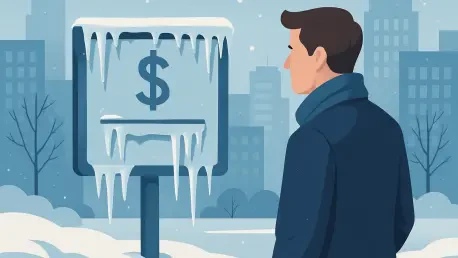In an economic landscape already fraught with uncertainty, the U.S. General Services Administration (GSA) has delivered a decision that sends shockwaves through the hospitality sector: per diem rates for federal employee travel within the continental United States will remain frozen at fiscal year 2025 levels through 2026. With a standard lodging rate of $110 per night and a meals and incidental expenses (M&IE) rate of $68—tiered between $68 and $92 for 296 non-standard areas—this policy, effective from October 1, 2025, to September 30, 2026, prioritizes fiscal restraint over industry support. This freeze, the first of its kind since the post-pandemic recovery period four years ago, raises pressing questions about the balance between government cost-saving measures and the survival of a sector heavily reliant on federal travel revenue. The hospitality industry, still grappling with rising operational costs and declining bookings, faces a pivotal moment. This market analysis delves into the implications of stagnant reimbursement rates, unpacks current trends in hotel performance, and forecasts the potential trajectory for stakeholders navigating this challenging terrain.
Market Dynamics: Unpacking Trends and Challenges
Per Diem Policies and Their Economic Footprint
The GSA’s decision to hold per diem rates steady reflects a deliberate strategy to manage taxpayer funds amid broader economic pressures. Historically, these rates—reimbursement caps for federal employees’ lodging, meals, and incidental expenses during official travel—have been adjusted to align with inflation and regional cost variations. However, in times of fiscal conservatism, such as the current climate, pauses in rate hikes have precedent, often leaving industries like hospitality to bear the brunt. Government travel constitutes a significant revenue stream for hotels, particularly in select-service and extended-stay segments near federal hubs. The freeze signals not just a cap on spending but a potential reduction in travel demand, as federal employees may struggle to find accommodations within the $110 nightly limit in high-cost areas. This policy, while rooted in budgetary discipline, casts a shadow over an industry already reporting weakened performance metrics, setting the stage for deeper market disruptions.
Revenue Pressures: Hotel Performance Under Siege
Diving into the data, the hospitality sector is already reeling from a notable decline in government travel demand, a trend exacerbated by the per diem freeze. Major hotel chains have reported alarming drops in revenue per available room (RevPAR), a key indicator of financial health. Reports from industry giants highlight a consistent pattern: a 10 percent year-over-year decline in U.S. government-related RevPAR for one leading brand, a 2.9 percent drop for another in the second quarter of this year, and a 2 percent fall in business transient RevPAR for a third, all tied to reduced federal bookings and spending cuts. These figures underscore the critical role government travel plays in stabilizing hotel income, especially during off-peak periods. With reimbursement rates stagnant, hotels face a double hit—fewer bookings and limited pricing flexibility—pushing many operators to rethink their market positioning and cost structures in a bid to stay afloat.
Industry Backlash: Costs Outpace Reimbursement
Beyond revenue declines, the hospitality sector is sounding alarms over the disconnect between static per diem rates and escalating operational expenses. Industry advocates argue that the freeze fails to acknowledge the post-pandemic economic reality, where labor, utilities, and supply costs have surged. Hotels in urban centers or near government facilities find the $110 lodging cap increasingly untenable, potentially forcing federal travelers into subpar or inconvenient accommodations. This tension extends further as many corporate travel policies benchmark against federal rates, meaning the freeze could dampen broader business travel demand. The risk of a shrinking customer base looms large, with some industry voices calling for targeted rate adjustments in high-cost regions—a solution yet to gain traction with policymakers. This growing rift between market conditions and policy decisions paints a grim picture for hoteliers seeking stability.
Future Projections: Navigating a Constrained Landscape
Demand Forecasts and Economic Headwinds
Looking toward 2026 and beyond, market forecasts paint a cautious outlook for the U.S. hospitality sector, with the per diem freeze adding to an already complex set of challenges. Recent industry analyses have downgraded growth projections for the next two years, citing softening demand across multiple segments and persistent economic uncertainty. Government travel, once a reliable anchor for hotels, is expected to remain subdued as federal budgets tighten, compounding the impact of broader consumer spending hesitancy and fluctuating corporate travel patterns. Outside luxury and upper-upscale categories, competition for bookings is intensifying, with mid-tier and budget hotels facing the fiercest struggle to capture limited demand. These projections suggest that the per diem freeze is not an isolated issue but part of a larger tapestry of market constraints likely to shape hotel performance in the near term.
Segment-Specific Vulnerabilities and Regional Gaps
Drilling deeper, the impact of frozen rates varies significantly across hotel segments and geographic markets, revealing stark disparities. Select-service and extended-stay properties, which cater heavily to government travelers, are particularly exposed, lacking the pricing power of premium brands to offset revenue losses. Regionally, hotels in high-cost metropolitan areas or federal hotspots face a tougher bind, as the $110 lodging rate falls short of local market averages, potentially deterring federal bookings altogether. In contrast, rural or less expensive markets may see less immediate strain, though overall demand weakness still poses risks. These uneven effects highlight a critical flaw in the one-size-fits-all rate structure, prompting discussions around more nuanced, data-driven reimbursement models that could better reflect regional cost realities—an approach not yet embraced by current policy frameworks.
Adaptive Strategies and Technological Shifts
Amid these headwinds, forward-looking trends point to potential avenues for resilience within the hospitality market. Some operators are turning to technology, such as dynamic pricing tools and AI-driven demand forecasting, to optimize revenue in a constrained environment, though such innovations often require significant upfront investment that smaller players may struggle to justify. Diversification also emerges as a key theme, with hotels exploring local leisure markets or alternative guest segments to offset government travel declines. Regulatory shifts, including potential federal budget reviews over the next year, could influence future per diem adjustments, offering a glimmer of hope for rate recalibration. However, without a clear rebound in federal travel demand, the sector’s ability to adapt will hinge on balancing cost efficiencies with strategic pivots—a delicate dance in an increasingly competitive arena.
Reflecting on the Path Forward: Strategic Imperatives
Looking back, the analysis of the GSA’s decision to freeze per diem rates for 2026 reveals a profound tension between fiscal responsibility and the economic vitality of the hospitality sector. The data underscores a market under strain, with RevPAR declines signaling the tangible impact of reduced government travel, while industry forecasts warn of continued challenges through the next couple of years. This period highlights the critical dependency of hotels on federal bookings and the cascading effects of policy on broader travel demand. For stakeholders, the path ahead demands actionable strategies: hoteliers are encouraged to diversify revenue streams by targeting non-government segments and leveraging technology for operational insights. Corporate travel managers must explore custom rate negotiations to bridge reimbursement gaps, while federal agencies face pressure to consider more granular rate adjustments for high-cost regions. These steps, though challenging, offer a roadmap for resilience, urging the industry to transform policy constraints into opportunities for innovation and adaptation in a tough economic climate.









